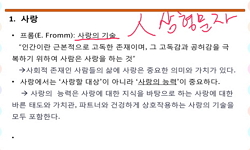본 연구의 목적은 학교 밖 청소년 삶의 만족도의 종단적 변화와 또래애착, 자아존중감, 진로준비행동, 사회적 낙인의 관계를 탐색하는데 있다. 이를 위해 한국청소년정책연구원(NYPI)에서 실...
http://chineseinput.net/에서 pinyin(병음)방식으로 중국어를 변환할 수 있습니다.
변환된 중국어를 복사하여 사용하시면 됩니다.
- 中文 을 입력하시려면 zhongwen을 입력하시고 space를누르시면됩니다.
- 北京 을 입력하시려면 beijing을 입력하시고 space를 누르시면 됩니다.
학교 밖 청소년 삶의 만족도의 종단적 변화와 또래애착, 자아존중감, 진로준비행동, 사회적 낙인의 관계 = Longitudinal Changes in Life Satisfaction Among Out-of-School Youth and Its Relationship with Peer Attachment, Self-Esteem, Career Preparation Behavior, and Social Stigma
한글로보기https://www.riss.kr/link?id=T17196664
- 저자
-
발행사항
부산 : 국립부경대학교 대학원, 2025
-
학위논문사항
학위논문(석사) -- 국립부경대학교 대학원 , 교육컨설팅학과 상담심리 , 2025. 2
-
발행연도
2025
-
작성언어
한국어
- 주제어
-
발행국(도시)
부산
-
형태사항
iii, 90 ; 26 cm
-
일반주기명
지도교수: 천성문
-
UCI식별코드
I804:21031-200000867723
- DOI식별코드
- 소장기관
-
0
상세조회 -
0
다운로드
부가정보
국문 초록 (Abstract)
본 연구의 목적은 학교 밖 청소년 삶의 만족도의 종단적 변화와 또래애착, 자아존중감, 진로준비행동, 사회적 낙인의 관계를 탐색하는데 있다. 이를 위해 한국청소년정책연구원(NYPI)에서 실시된 학업중단 청소년 패널조사 자료 중 2차년도 (2014년)부터 5차년도(2017년)까지 참여한 311명의 자료를 활용하였다. 모든 변인의 척도는 학업중단 청소년 패널조사에서 사용된 영역별 문항을 사용하였다. 자료 분석은 SPSS 25.0 프로그램을 활용하여 빈도분석, 신뢰도분석, 기술통계분석, 상관관계분석을 실시하였고, AMOS 20.0 프로그램을 사용하여 잠재성장모형 분석을 진행하였다. 분석 결과 나타난 학교 밖 청소년의 삶의 만족도 변화와 또래애착, 자아존중감, 진로준비행동, 사회적 낙인이 미치는 영향을 요약하면 다음과 같다. 첫째, 시간의 흐름에 따른 학교 밖 청소년의 삶의 만족도 변화가 비선형적으로 유의한 것으로 나타났다. 학교 밖 청소년의 삶의 만족도는 2차년도에서 4차년도로 갈수록 점차 감소하다 4차년도를 기점으로 5차년도까지 미미하게 증가하였다. 둘째, 학교 밖 청소년의 삶의 만족도의 변화에서 초기에는 개인차가 있으나 변화에는 개인차가 없는 것으로 나타났다. 셋째, 또래애착, 자아존중감, 진로준비행동, 사회적 낙인이 학교 밖 청소년의 삶의 만족도 변화에 미치는 영향을 확인한 결과, 초기 삶의 만족도에는 유의미한 영향을 미쳤으나, 변화에는 사회적 낙인만이 영향을 미치는 것으로 나타났다. 이상의 결과를 종합하면, 학교 밖 청소년의 삶의 만족도가 고정적인 것이 아니라 심리·환경적 요인과 상황적 맥락에 따라 변화하며, 여러 요인 중 특히, 사회적 낙인이 삶의 만족도 변화에 핵심적인 영향을 미치는 것을 알 수 있다. 따라서, 학교 밖 청소년의 삶의 만족도 변화가 비선형적으로 이루어지는 원인과 이에 영향을 미치는 새로운 변인을 탐색하고, 사회적 낙인 완화를 위한 프로그램 개발 및 개입 방안 마련이 필요할 것으로 예상된다. 마지막으로 본 연구결과를 바탕으로 후속 연구에 대한 제언과 시사점을 논의하였다.
다국어 초록 (Multilingual Abstract)
The results of the effects of peer attachment, self-esteem, career preparation behaviors, and social stigma on changes in out-of-school youth's life satisfaction are summarized as follows. First, the change in out-of-school youth's life satisfaction over time was found to be nonlinearly significant. Out-of-school youth's life satisfaction gradually decreased from year 2 to year 4, and then increased slightly from year 4 to year 5. Second, we found individual differences in the initial change in out-of-school youth's life satisfaction, but not in the change. Third, we examined the effects of peer attachment, self-esteem, career preparation behaviors, and social stigma on the change in of out-of-school youth‘s life satisfaction, and found that peer attachement had a significant effect on initial life satisfaction, but only social stigma had an effect on change.
Overall, these findings suggest that life satisfaction among out-of-school youth is not static, but changes depending on psycho-environmental factors and situational contexts, and that social stigma, among other factors, is a key influence on life satisfaction change. Therefore, it is necessary to explore the causes of nonlinear changes in out-of-school youth's life satisfaction and new variables that affect it, and to develop programs and interventions to alleviate social stigma.
Finally, suggestions and implications for further research are discussed based on the findings of this study.
The purpose of this study is to explore the relationship between longitudinal changes in out-of-school youth life satisfaction and peer attachment, self-esteem, career preparation behaviors, and social stigma. To this end, we utilized data from the Na...
The purpose of this study is to explore the relationship between longitudinal changes in out-of-school youth life satisfaction and peer attachment, self-esteem, career preparation behaviors, and social stigma. To this end, we utilized data from the National Youth Policy Institute's (NYPI) Panel Survey of out-of-school youth, which included 311 participants from the second(2014) to the fifth(2017) surveys. All variables were measured using the domain-specific questions used in the Panel Survey of Dropout Youth. Data analysis was conducted using SPSS 25.0 for frequency analysis, reliability analysis, descriptive statistics, and correlation analysis, and AMOS 20.0 for latent growth model analysis.
The results of the effects of peer attachment, self-esteem, career preparation behaviors, and social stigma on changes in out-of-school youth's life satisfaction are summarized as follows. First, the change in out-of-school youth's life satisfaction over time was found to be nonlinearly significant. Out-of-school youth's life satisfaction gradually decreased from year 2 to year 4, and then increased slightly from year 4 to year 5. Second, we found individual differences in the initial change in out-of-school youth's life satisfaction, but not in the change. Third, we examined the effects of peer attachment, self-esteem, career preparation behaviors, and social stigma on the change in of out-of-school youth‘s life satisfaction, and found that peer attachement had a significant effect on initial life satisfaction, but only social stigma had an effect on change.
Overall, these findings suggest that life satisfaction among out-of-school youth is not static, but changes depending on psycho-environmental factors and situational contexts, and that social stigma, among other factors, is a key influence on life satisfaction change. Therefore, it is necessary to explore the causes of nonlinear changes in out-of-school youth's life satisfaction and new variables that affect it, and to develop programs and interventions to alleviate social stigma.
Finally, suggestions and implications for further research are discussed based on the findings of this study.
목차 (Table of Contents)
- Ⅰ. 서 론 1
- 1. 연구의 필요성 및 목적 1
- 2. 연구문제 10
- 3. 용어의 정의 11
- Ⅱ. 이론적 배경 14
- Ⅰ. 서 론 1
- 1. 연구의 필요성 및 목적 1
- 2. 연구문제 10
- 3. 용어의 정의 11
- Ⅱ. 이론적 배경 14
- 1. 학교 밖 청소년 14
- 2. 삶의 만족도 18
- 3. 학교 밖 청소년의 삶의 만족도에 영향을 미치는 요인 23
- Ⅲ. 방 법 33
- 1. 데이터 및 표본 33
- 2. 측정도구 36
- 3. 자료분석 40
- Ⅳ. 결 과 42
- 1. 기술통계 및 상관분석 결과 42
- 2. 연구모형분석 45
- Ⅴ. 논 의 52
- 참고문헌 62
- Abstract 89










